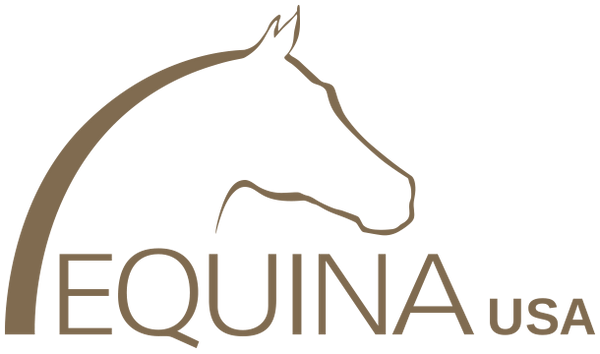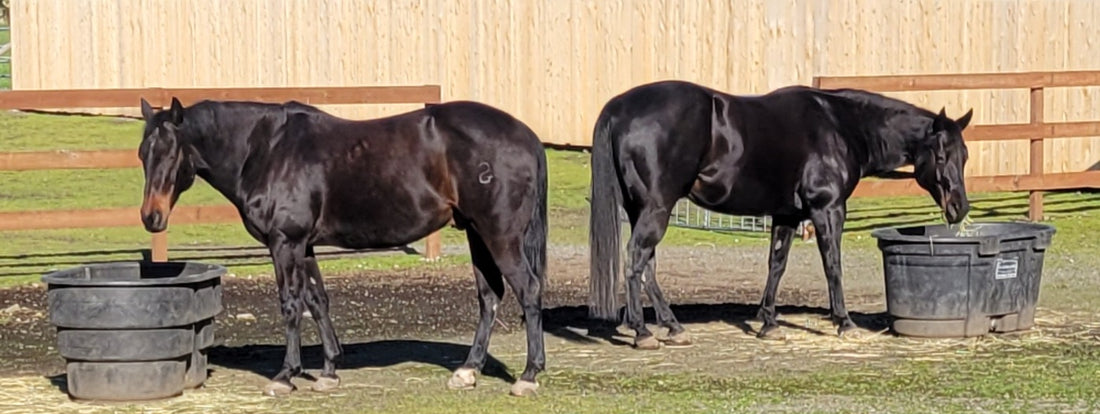As horse owners we all recognize the diagnosis of ‘Cushing’s’. It goes by many names, pituitary pars intermedia dysfunction (PPID), Equine Cushing's disease (ECD), or Equine Cushing’s syndrome (ECS). ‘Cushing’s’ “is a chronic progressive disease of the intermediate pituitary gland of older horses” (Patrick M McCue DVM, 2002). Generally found in older horses over the age of 10 but as young as 7 and as old as 40, with the average age of 19. Additionally, ponies are more likely to be affected vs horses. The visual signs are easy to see – shaggy curl coat, unusual shedding patterns, and weight loss or uneven weight distribution to name a few.
Polysaccharide storage myopathy (PSSM) “results in an abnormal accumulation of glycogen, the form of sugar stored in muscle. This can cause episodes of muscle stiffness and pain after exercise, also known as “tying up” or exertional rhabdomyolysis. Affected horses may be reluctant to move and may display sweating, lameness, and muscle tremors.” (Young, 2020)
There are two types of PSSM – PSSM1 and PSSM2. “Type 1 is caused by a known genetic mutation and a DNA test is available. Type 2 may also be genetic, but the exact cause is unknown. There are currently no scientifically verified DNA tests for PSSM2, but a muscle biopsy can be performed for diagnosis.” (Young, 2020)
Cushing’s and PSSM can be managed through thoughtful consistent care. This includes regular veterinary checkups, routine hoof care, and nutrition to prevent obesity in the horse.
Meet Joseph and Dallas! Two loved geldings who enjoy all the activities their owners participate in.
When Joseph, a 20-year-old gelding, well-loved cow and trail horse, was diagnosed with PSSM1 and Cushing’s his owners wanted to maintain his health to ensure a continued life of comfort and activity.

Working with Dr. Sara, they started Joseph on a low sugar diet, teff hay, and ration balancer. With the diet changes, his owners started to notice changes to Josephs appearance. Dull coat, change in hoof structure, and the classic crested neck.

After consulting with Dr. Sara on these concerns, they decided to give Equina USA Meganutril Ultra and Keragard a try.
About a month later, during a routine grooming session, their owner removed their winter coats to groom and noticed the incredible shine on both horses.
While Dallas doesn’t have the same health challenges as Joseph, he is also fed the Equina Meganutril which gives him the beautiful shine.

The story of Joseph is important for all horse owners to understand. Cushing’s and PSSM do not have cures, so deepening our understanding of these diseases to ensure our equine partners live their best life comfortably is key.
We will be continuing to follow the updates of Joseph as his owners work to ensure his comfort and health, be sure to subscribe to receive updates!
- Sara Perkins, DVM
Remember, your horse depends on you to be their voice; always consult your local veterinarian when needed!
Bibliography
Patrick M McCue DVM, P. (2002). Equine Cushing's disease. Veterinary Clinics of North America: Equine Practice, 533-543. Retrieved 04 02, 2024, from https://www.sciencedirect.com/science/article/abs/pii/S074907390200038X?via%3Dihub
Young, A. (2020). Polysaccharide Storage Myopathy (PSSM). Veterinary Genetics Laboratory, 1-6. Retrieved 04 02, 2024, from https://ceh.vetmed.ucdavis.edu/health-topics/polysaccharide-storage-myopathy-pssm

